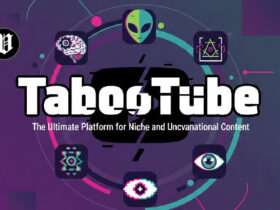Typography is more than pretty letters it’s a voice. A custom font can become the tone of your brand, carrying personality across packaging, ads, apps, and websites. In this piece I’ll walk you through when it makes sense to commission a custom typeface, what the investment looks like, and practical steps to get it right.
Whether you’re a startup or an established name, a tailored typeface can help you create logos and enhance your brand by making every piece of communication feel unmistakably yours. But custom fonts aren’t magic dust they’re a strategic tool that needs clear goals and proper execution.
Before you commit money and time, ask a few basic questions: who is your audience, how often will the font be used, and will it be deployed across both print and digital channels? The answers will shape scope, cost, and design decisions.
Why brands commission custom typefaces
Custom fonts deliver three big benefits:
- Distinctiveness. A unique typeface helps you stand out in crowded feeds and shelf spaces. Think of it as a signature that competitors can’t copy simply by buying a license.
- Consistency. Having a single designed system for headlines, body copy, and UI elements reduces on-brand friction across teams and channels.
- Control. Custom fonts can be optimized for legibility at different sizes, languages, and screen conditions which improves user experience and accessibility.
Large organizations often go custom because it solves a complex identity problem at scale. Even so, smaller brands can gain disproportionate value when the font supports a focused positioning strategy.
When to invest in a custom font
Consider commissioning a custom typeface when one or more of these apply:
- You’re rebranding and need a visual system that can carry a new positioning.
- Your brand appears at very large scale (billboards, retail signage) or very small scale (apps, wearables) and generic fonts don’t perform.
- You work across many languages or scripts that require reliable typographic support.
- You plan to build strong product differentiation and own the entire look-and-feel (e.g., subscription services or consumer products).
- You face persistent licensing costs or legal complexity from using multiple commercial fonts.
If your needs are modest social posts, occasional print a well-curated licensed font family might be a smarter, faster option.
How to approach a custom-font project (step-by-step)
- Define goals and use cases. List every place the font will appear (UI, print, packaging, signage) and the technical constraints (web performance, file sizes).
- Set a budget. Custom type projects range widely from a few thousand dollars for minor tweaks to tens or hundreds of thousands for full families with multiple weights and scripts.
- Hire expertise. Work with a foundry or experienced type designer. Review portfolios and ask about prior cross-platform projects.
- Design & testing. Prototype characters, test for legibility at small sizes, check kerning pairs, and validate across screens and print. Include accessibility and localization tests early.
- Deliverables & licensing. Decide what files you need (.woff2/.woff/.ttf/.otf), include webfont subsets for performance, and secure rights for ownership or long-term licensing.
Measuring ROI & cost considerations
Return on a custom font is often indirect measured through increased brand recognition, higher perceived value, and improved usability (lower support calls, higher conversion on UI flows). Track metrics like brand recall tests, conversion rates before/after rollout, and user feedback on readability. Pair qualitative insights with hard engagement metrics to justify the spend.
Costs vary by scope: a single custom weight for a small brand is cheaper; a multi-weight, multi-script family with hinting and web-optimized files is pricier. Factor in maintenance: future updates, additional glyphs, or new scripts add cost.
Technical tips for web and mobile
- Use .woff2 for modern browsers to reduce file size and speed up page loads.
- Subset fonts (keep only needed glyphs) for faster performance on web builds.
- Provide good fallbacks in your CSS font-family stack to maintain legibility if the webfont fails.
- Test variable fonts if you want flexible weights/widths with smaller file sizes — they’re increasingly supported and can cut down asset bloat.
- Prioritize accessibility: ensure sufficient contrast, generous x-height for body text, and clear distinctions between similar characters (e.g., I, l, 1).
Quick checklist is a custom font right for you?
- Do you need a unique visual voice that a licensed font can’t provide?
- Will the font be used broadly across physical and digital touchpoints?
- Can you allocate budget for design, testing, and ongoing maintenance?
Are there measurable business outcomes you expect (brand recognition, conversions, reduced friction)?














Leave a Reply